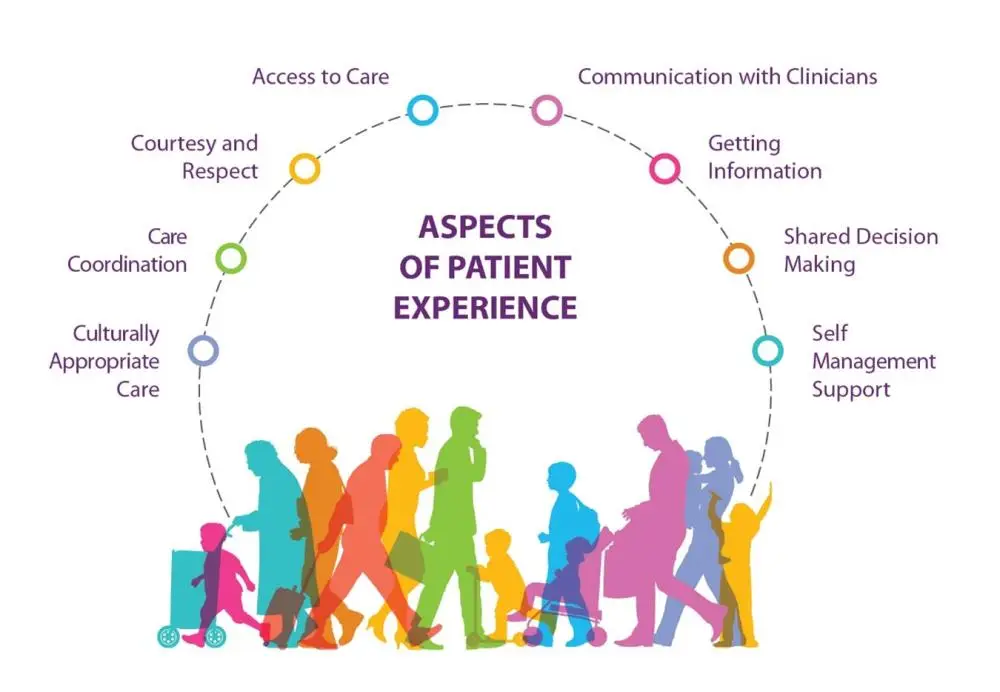What do your patients expect when they come to the hospital? The health care landscape has evolved dramatically in recent years, but what patients fundamentally seek remains unchanged. They want to feel seen, to be heard, and to heal. While technological advancements and shifting delivery models have transformed many aspects of care delivery, patient expectations still center on these core human needs.
Recent data from the American Hospital Association and Press Ganey shows that 13 million patients surveyed after hospital stays report improvements in their overall care experience and perception of safety. This positive trend demonstrates that health care organizations are increasingly recognizing and addressing understanding what matters most to patients. How organizations meet, exceed, or fall short of patients’ expectations for quality, timely, and compassionate care directly impacts health outcomes, loyalty, and overall cost.
The role of patient expectations in outcomes
Patient expectations play a pivotal role in shaping a patient’s experience and satisfaction within the health care system. These expectations encompass a wide range of factors, including health care accessibility, facilities, and clinicians’ interpersonal and clinical skills.
Meeting patients’ expectations is so influential that the same care delivered to two patients with different expectations will result in varying experiences, levels of satisfaction, and possibly different outcomes.
Several studies have highlighted the significant impact of patient satisfaction on indicators such as adherence to treatment plans and 30-day readmission rates. One study focusing on patients with hypertension found that the more satisfied the patient was with physician-patient communication, the better their adherence and self-care, underscoring the crucial role of patient satisfaction in treatment adherence. Multiple studies, including one from PubMed and another from The American Journal of Managed Care, have demonstrated the significant relationship between patient satisfaction and quality measures such as 30-day readmission rates.
The consistent evidence shows that meeting patient expectations significantly impacts health outcomes across a range of use cases in hospital-based care, making it not just a nice-to-have but an essential driver of quality and stability.
Patients want more personal, more integrated care
Patient expectations have evolved significantly over time, influenced by factors such as technological advancements, changes in health care delivery models, and increasing patient empowerment.
Today, patient expectations have expanded to encompass a desire for personalized, patient-centered care, convenient access to health care services, transparent and clear communication, and active involvement in decision-making regarding their health.

This personalization directly impacts clinical outcomes – when patients receive care tailored to their specific needs and preferences, they typically experience better care. For example, when a patient is admitted to the hospital, instead of using one-size-fits-all approaches that might keep patients hospitalized too long or discharge them too quickly, personalized care creates “right-sized” lengths of stay that can improve recovery and satisfaction.
Many health care organizations have already started adopting strategies for personalizing care, and the results are impressive. Organizations implementing patient-centered approaches are seeing measurable improvements, including a 10% enhancement in customer experience within 6 to 12 months, a 5% to 10% reduction in administrative costs, and a 20% to 25% enhancement in quality standards. These improvements align with findings from the American Hospital Association, which reported in March 2025 that hospitals fostering a strong culture of safety also report better experiences for both patients and healthcare workers, alongside improvements in key safety outcomes.
Strategies for meeting patient expectations
In this environment, health care organizations can focus on four core strategies to help clinical teams meet patient expectations.
1. Optimized processes and workflows

With a clinical workforce shortage, today’s clinicians face extreme time constraints.
As it stands, some doctors might spend as little as 15% to 30% of their time with patients, with the rest spent on administrative tasks. This reality highlights the critical need for workflow optimization that can free clinicians to focus on direct patient care.
Optimizing patient workflow involves removing inefficiencies to decrease throughput and improve patient flow across hospital units. By addressing bottlenecks and productivity drains that impact care transitions, medical staff can spend more time interacting with patients, providing quality care, and improving resource utilization.
When care transitions are optimized and clinicians have more time to spend with patients, there is a downstream impact for patient experience – wait times decrease, door-to-provider times in emergency departments improve, lengths of stay become appropriately sized, and the overall patient experience enhances.
Health technology embedded into clinical workflows can further amplify these benefits by standardizing clinician decision-making processes, providing evidence-based information at the point-of-care, automating administrative processes, alleviating clinician and staff burdens, and helping personalize care decisions. Technology to support a connected patient experience.
Technology plays a pivotal role in fostering a more connected patient care journey. The strategic integration of various technological solutions has the potential to optimize patient experience, improve satisfaction, and enhance overall care delivery. When purposefully implemented, these technologies can streamline communication, facilitate patient engagement, and improve the overall care journey by enabling patients, clinicians, and payers to maintain contact and share information quickly and consistently.
The adoption of automated patient outreach, expansion of virtual care options, and hybrid options that blend in-facility and at-home services have been instrumental in meeting patient expectations and organizational goals. According to a recent Repugen article, “64% of physicians report improved patient outcomes with telehealth, 84% see enhanced patient satisfaction, and 89% believe it increases access to care.” These statistics underscore how technology adoption directly contributes to meeting core patient expectations while improving clinical outcomes.
It is important to note that while technology plays a role in enhancing the patient experience, there are considerations to be mindful of. Overreliance on technology may favor only specific types of patients who are comfortable in and have access to a digital space. Therefore, a balanced approach that leverages technology while maintaining genuine interpersonal connections and addressing the digital divide is essential to ensure that the patient experience is inclusive and patient-centered.
2. Patient-centric billing/collections processes
Adopting a patient-centric mindset in billing involves treating patients as discerning individuals with unique needs and preferences. Doing so can significantly improve patient satisfaction by addressing the financial aspects of the patient experience, aligning with patient expectations, and fostering trust and loyalty.
Patient-centric billing processes prioritize clear and transparent communication regarding financial responsibilities, costs, and billing procedures. By providing upfront and readily accessible pricing information, health care organizations can meet patient expectations and improve transparency of patient obligations.
Additionally, leveraging the latest technology for unified, automated patient billing can simplify collections, maximize balance resolution, and help maintain peace of mind. Multi-channel collections platforms and time-of-service payment collection systems can improve efficiency, ease of use, and convenience for patients, ultimately contributing to a better overall experience.
3. Safety culture and patient experience
Recent findings from the American Hospital Association and Press Ganey reveal a critical connection between safety culture and patient experience. Organizations prioritizing safety culture report better patient outcomes and improved workforce resilience.
According to the March 2025 AHA report, hospitals fostering strong safety cultures show measurable improvements in key safety metrics like falls and infections across more than 25,000 units in 2,430 hospitals, while simultaneously enhancing patient and employee experiences.
Creating systems that encourage reporting of safety concerns, transparent communication about errors, and continuous learning from adverse events not only improves safety but also enhances patient trust and satisfaction, creating a virtuous cycle of improvement.
Improved patient experience leads to better performance
In a comprehensive study conducted in 2017, a team of researchers delved into the data of almost 20,000 patient admissions across 3,767 hospitals over six years. Using information from the Centers for Medicare & Medicaid Services and the Hospital Consumer Assessment of Healthcare Providers and Systems, the study firmly established the relationship between patient experience and key financial metrics: net patient revenue, net income, and operating margin.
The findings were striking: hospitals that provided a more positive patient experience saw a notable increase in financial performance . Conversely, and perhaps more importantly, those with negative patient experiences faced a significantly greater decline in financial performance .
While patients’ expectations have changed in the years since the study, the fundamental takeaway still applies. Health care organizations cannot afford to not meet patients’ expectations.

Addressing those expectations impacts not just patient satisfaction but also care delivery and overall health care outcomes. Knowing and understanding what patients expect when they walk into a care setting is indispensable in moving toward patient-centered care. Learn more about how to connect with patients and improve the patient experience.



